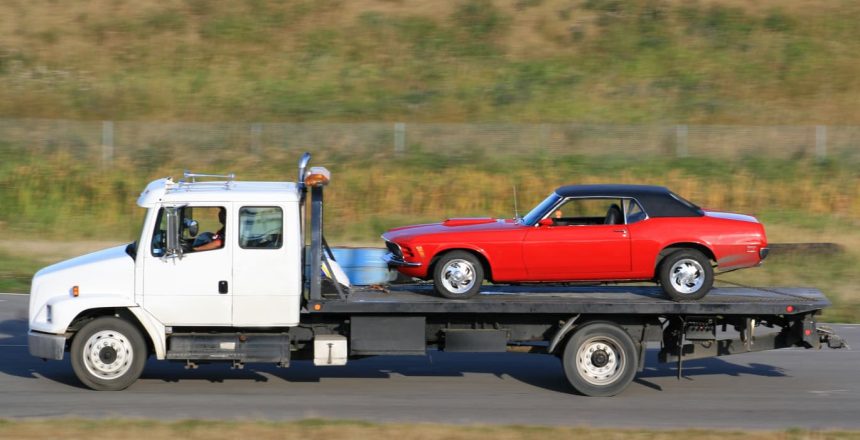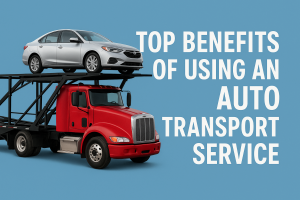It is possible to transport a car that isn’t running, but the process will be slightly different from usual.
Shipping a car is typically a straightforward process. You begin by choosing a carrier, making the necessary arrangements, and bringing the car to wherever they are picking it up.
Your carrier will then drive the vehicle onto the transport truck, ship it to your desired location, and move it back off the truck.
But what about when the vehicle won’t start or has another issue that prevents you or anyone else from driving it?
While this scenario complicates things a little bit, it’s still possible to ship a non-running car if your chosen carrier has the necessary equipment and expertise.
Here’s a look at the four steps you’ll need to take before shipping a vehicle you can’t drive onto the transport truck.
Key takeaways
- Shipping a car that doesn’t run is possible
- You will encounter some additional steps
- The process begins by selecting the right carrier
- Mercury Auto Transport can streamline the process
1. Determine what’s wrong with the car
Before all else, you’ll have to identify precisely what’s wrong with your vehicle because that will determine how the carrier will load the car.
If your vehicle’s brakes and steering work fine but the engine won’t start, a tow truck and winch could be the best solution. This method involves hiring a tow truck to bring your vehicle to the shipping terminal. From there, the carrier will load your car manually or by using a winch.
You can sometimes make this scenario more manageable by selecting a door-to-door shipping service where the carrier will pick the vehicle up from your home.
Cars that don’t brake, steer, or roll complicate matters because you can’t physically push the vehicle onto a transport truck. There could be challenges when attempting to tow the car, as well.
You might have to load your car onto the tow truck or flatbed using a forklift to bring the vehicle to the shipping terminal. A flatbed or enclosed trailer might be the only option for shipping your vehicle, too, depending on the scope of the damage.
Start the entire process by figuring out what’s wrong with your car, then you can begin making your vehicle transport decisions based on its issues.
2. Select a transport type
No matter the issues you’re experiencing with your vehicle, you’ll have to decide on a transport type.
As always, your three choices are open, enclosed, and flatbed.
Open transport is the most cost-efficient and popular method on the market. The main issue is that your vehicle could be exposed to debris from the road, so it isn’t the best option if you’re moving a classic car and want to keep the paint in mint condition. You could find that open transport isn’t an option if the carrier can’t get your vehicle onto the truck, as well.
Enclosed transport is when the vehicle is placed inside a trailer or other secure environment during shipping. This method costs more than open transport, but it’s also safer because the car is protected throughout the process. Note that enclosed transport might not be possible if your vehicle won’t steer or roll.
Flatbed transport puts your vehicle on a raised platform behind a truck. Your vehicle is in the open during transport with this method, but it’s a little more flexible because your carrier can lift the car onto the bed and secure it. Flatbed shipping might be your only option if your car won’t roll or steer.
Consider all your shipping options before making a selection to ensure you end up selecting the transport type that best meets your needs.
3. Figure out the cost
After narrowing down your needs, it’s time to determine how much your car transport will cost. Multiple factors go into the price, including:
- Distance: Longer distances will cost you more money.
- Vehicle size: A larger vehicle takes up more space on the truck and weighs more, leading to higher fees.
- Time of year: Summer tends to be more expensive for vehicle shipping than winter.
- Speed of delivery: Rush delivery isn’t always possible, but it’ll cost you extra when you receive it.
- Carrier type: Enclosed and flatbed shipping will cost you more than open transport.
- Drop-off location: Door-to-door shipping may be more expensive than terminal-to-terminal before you include terminal fees (which can add up).
The easiest way to compare costs is to use an auto transport broker. These brokers will ask about your needs and send you quotes from licensed shippers, ensuring you can secure the exact type of vehicle shipping you need at a cost you can appreciate.
4. Get some insurance
Even if your car isn’t running, you’ll want insurance on it. After all, the entire reason you’re shipping it somewhere is that it still holds some value, so protecting the asset should be a priority.
The auto transport carrier you select will usually have some insurance covering your vehicle for damage between $100,000 and $1,000,000. However, if you’re shipping a high-value or rare car, it’s a good idea to inquire about the specifics of the insurance policy before you begin.
It’s wise to sign up for additional insurance if you don’t believe your vendor’s policy is enough because you’ll want your vehicle to have optimal levels of protection.
Choosing your vehicle transport vendor
You’ll want to inform your auto transport carrier of your needs before beginning the process. That way, you can be confident the vendor has access to the equipment necessary to ship a non-running car. If the car rolls and steers, there’s a good chance the carrier can push the vehicle into place, but you’ll want to inform them of the issue from the start.
Mercury Auto Transport is a car shipping broker that can put you in touch with vendors in your area. We’ll present you with offers from carriers licensed by the Federal Motor Carrier and Safety Administration, giving your assurance that your vehicle is in good hands. Contact Mercury Auto Transport today to discuss your car transport needs.






